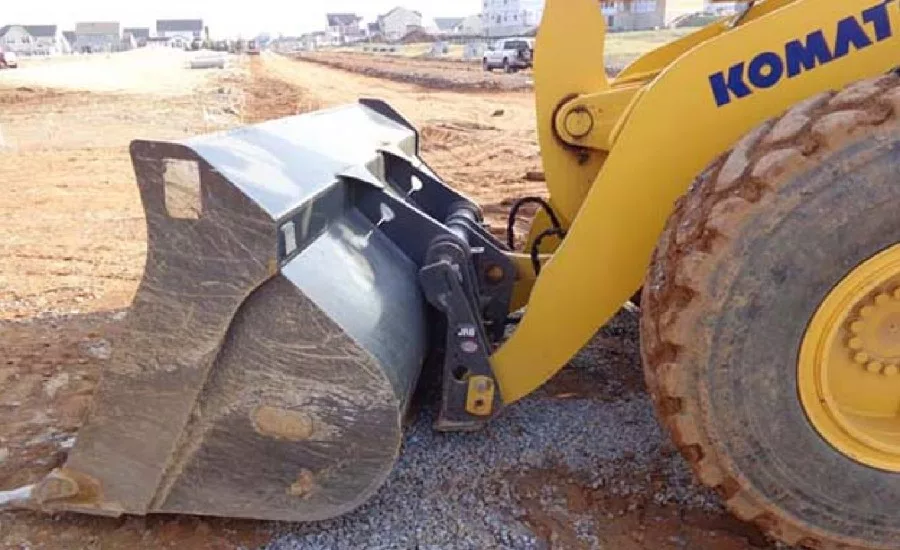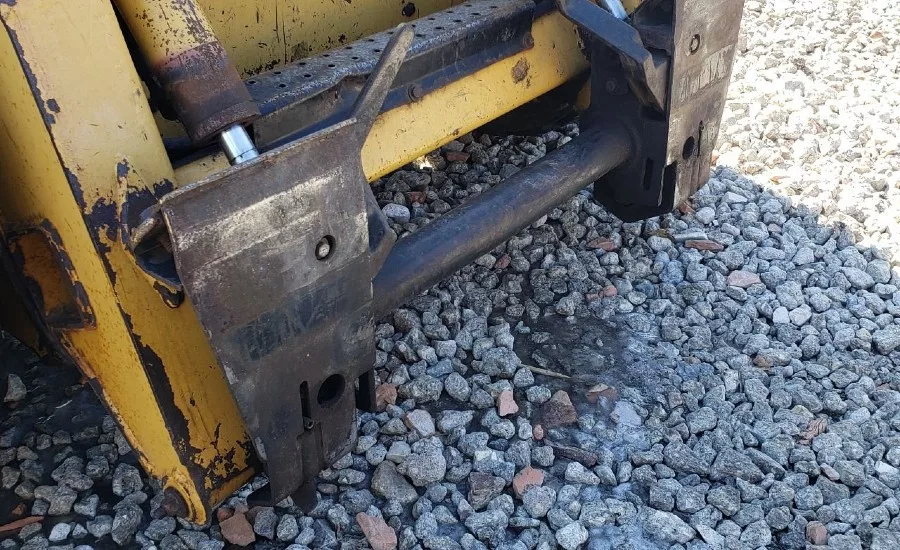Quick Coupler 101 for Drillers in the Field
They Make Skids, Excavators into Multi-Tools, but Demand Safe Operation

Quick couplers turn excavators, skid steers and other machines into Swiss Army knives. Safe operation, columnist Dave Bowers says, involves knowing how to use, secure and test each attachment connected to the machine.
Source: Dave Bowers

Operators should do regular checks of the machines they run, familiarize themselves with the types of couplers and how to use them, and do safety checks after connecting each new attachment.
Source: Dave Bowers
I spent a crisp early April evening sitting outside on my deck wondering about topics for this article. I reflected on the successful training season we just finished at the facility I work at, amounting to roughly 200,000 training hours without a serious injury. I thought of a recent social media post from my friend Jim Smith at Fleming College, saying that he too is finishing up with a class of future drilling professionals. Both our programs have the same goal in mind: to provide the safest, best-trained workers to the drilling industry. Then, the idea came to me. Drillers understand the dangers of drill rigs and pump hoists, but does the list of machines drillers could utilize in a day stop there?
Obviously, the answer is no. Drillers utilize just about any type of heavy equipment you can think of depending on the task at hand. Every driller I’ve met (including myself) is the best driller they know, and most consider themselves good machine operators. However straightforward you find running a backhoe, skid steer or loader, one device common to all machine types that causes a lot of injuries and deaths when neglected is the “quick coupler.”
Quick coupling devices allow the machine to easily change attachments, from a bucket to forks for example. The machine and attachment combinations seem endless. Some of the common attachments, like buckets, jibs, personnel platforms, grapples, brooms and hammers, allow us to repurpose the equipment we operate in moments. Machine operators need to understand proper use and operation of the connection device to prevent unfortunate situations.
Quick Coupler Safety
I read about a recent Occupational Safety and Health Administration (OSHA) investigation involving two employees working to install new wooden fence posts using a skid steer with a bucket attachment. One employee held up each 7-foot-tall post while the coworker operating the skid steer with the bucket full of soil drove the post into the ground. As the coworker pushed down with the skid steer bucket, the bucket separated from the control arm and struck the other employee pinning him to the ground. The soil and bucket combined weighed 1,900 pounds, enough weight to fatally injure the employee. How do you look the spouse or parent of your coworker in the eye after such an incident?
I know most of us do not install fencing this way, but who reading this has not misused a machine to make a job easier? If something like this were to happen on your jobsite, OSHA would inquire about the work practices used to install the posts, but they would also want to inspect the skid steer bucket connection pins for proper operation and connections.
The most common of the quick coupler accidents involve a machine that most of us use: the excavator or backhoe. It’s common when using trench boxes — or even digging services — to use buckets of different sizes. The potential risk comes when, after changing from one bucket size to another (to either access the inside of a trench box or finish the bottom of a trench), the operator fails to properly ensure the new bucket is locked and fully engaged. If not, when the machine swings back to the hole and the operator opens the bucket to begin digging, the bucket comes off and winds up in the trench. In cases like this, any worker in the trench can face serious injury or death.
When operating heavy equipment, we need to check that quick coupler locking mechanisms are properly engaged and must verify that any safety locks are in place after every attachment change. Many equipment manufacturers recommend that you test the connection after a change by using the ground and applying pressure to ensure the attachment will not fall off during use. Some manufacturers recommend that you use the newly connected bucket to lift the toes of the machine off the ground about 6 inches. Of course, if you plan to conduct this check in an area, make sure the pressure applied to the ground will not damage any buried structures or utilities.
Automatic or Manual? OEM or Aftermarket?
Familiarize yourself with the type or types of couplers you use. What different types of quick couplers are available? To start, quick couplers come in fully automatic and manual versions. Manual, pin-lock types have a locking pin that operators must install and remove by hand. In many incidents involving manual couplers, you find the safety pin not properly installed at the time. Automatic couplers have a button or switch in the cab to activate the slide plate or gravity bars. During your pre-shift preparation, follow the good practice of verifying the audible alarm will sound when the lock is open. Many incidents involving automatic couplers come down to improperly or partially locked slide bars. As mentioned, remember to always perform the ground check after changing any attachments!
Most quick couplers used on excavators get installed after-market. Take extra care inspecting such devices. Do you have the maintenance and usage documentation for the coupler? During pre-shift inspect, verify the condition and correct installation of the pins and keepers. Look for cracks in the welds and the steel around the pin holes. Visually inspect any hydraulic hoses for leaks in the hoses and fittings. (Do not use your hand to check for hydraulic leaks. Use a piece of paper or cardboard to prevent an injection injury.) Cycle the locking mechanism several times. Check that the lock will fully engage and release, and has proper lubrication.
Always remove the bucket when making lifts on an excavator equipped with a quick coupler, and only attach loads to the lifting eye on the coupler — never the bucket, even if the bucket has a lifting bail. Check the lift capacity of the excavator and the coupler, and never lift more than the rated safe working load. By removing the bucket, you will reduce unnecessary weight to be lifted and increase visibility for the operator.
I know much of this seems basic but a quick OSHA search for “bucket” and “struck-by” returns far too many injuries and deaths from this type of incident. A recent study by the quick coupler manufacturer Palatin, titled “Coupler Accidents Resulting in Injury or Death,” found on average 2% of accidents were equipment failures and 98% were due to operator errors or lack of training. Unfortunately, in the safety world, human error and lack of training consistently rank high among the most cited reasons for worksite fatalities. We, as an industry, need to take the time to train our workers in not only equipment operation but critical decision-making as well.
As I wrap up, I want to thank mentor and safety guru Glenn Minyard for help completing this article accurately and on time. Until next time, have a safe and productive work season and keep turning to the right.
Looking for a reprint of this article?
From high-res PDFs to custom plaques, order your copy today!




